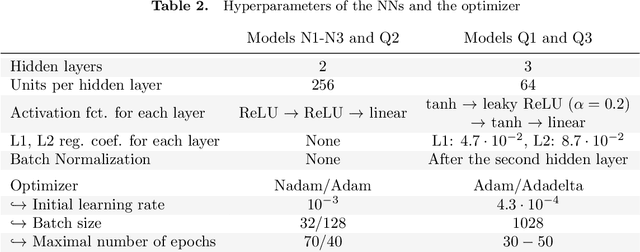Fernando Iglesias-Suarez
Towards Physically Consistent Deep Learning For Climate Model Parameterizations
Jun 06, 2024Abstract:Climate models play a critical role in understanding and projecting climate change. Due to their complexity, their horizontal resolution of ~40-100 km remains too coarse to resolve processes such as clouds and convection, which need to be approximated via parameterizations. These parameterizations are a major source of systematic errors and large uncertainties in climate projections. Deep learning (DL)-based parameterizations, trained on computationally expensive, short high-resolution simulations, have shown great promise for improving climate models in that regard. However, their lack of interpretability and tendency to learn spurious non-physical correlations result in reduced trust in the climate simulation. We propose an efficient supervised learning framework for DL-based parameterizations that leads to physically consistent models with improved interpretability and negligible computational overhead compared to standard supervised training. First, key features determining the target physical processes are uncovered. Subsequently, the neural network is fine-tuned using only those relevant features. We show empirically that our method robustly identifies a small subset of the inputs as actual physical drivers, therefore, removing spurious non-physical relationships. This results in by design physically consistent and interpretable neural networks while maintaining the predictive performance of standard black-box DL-based parameterizations. Our framework represents a crucial step in addressing a major challenge in data-driven climate model parameterizations by respecting the underlying physical processes, and may also benefit physically consistent deep learning in other research fields.
ClimSim: An open large-scale dataset for training high-resolution physics emulators in hybrid multi-scale climate simulators
Jun 16, 2023Abstract:Modern climate projections lack adequate spatial and temporal resolution due to computational constraints. A consequence is inaccurate and imprecise prediction of critical processes such as storms. Hybrid methods that combine physics with machine learning (ML) have introduced a new generation of higher fidelity climate simulators that can sidestep Moore's Law by outsourcing compute-hungry, short, high-resolution simulations to ML emulators. However, this hybrid ML-physics simulation approach requires domain-specific treatment and has been inaccessible to ML experts because of lack of training data and relevant, easy-to-use workflows. We present ClimSim, the largest-ever dataset designed for hybrid ML-physics research. It comprises multi-scale climate simulations, developed by a consortium of climate scientists and ML researchers. It consists of 5.7 billion pairs of multivariate input and output vectors that isolate the influence of locally-nested, high-resolution, high-fidelity physics on a host climate simulator's macro-scale physical state. The dataset is global in coverage, spans multiple years at high sampling frequency, and is designed such that resulting emulators are compatible with downstream coupling into operational climate simulators. We implement a range of deterministic and stochastic regression baselines to highlight the ML challenges and their scoring. The data (https://huggingface.co/datasets/LEAP/ClimSim_high-res) and code (https://leap-stc.github.io/ClimSim) are released openly to support the development of hybrid ML-physics and high-fidelity climate simulations for the benefit of science and society.
Deep Learning Based Cloud Cover Parameterization for ICON
Dec 21, 2021



Abstract:A promising approach to improve cloud parameterizations within climate models and thus climate projections is to use deep learning in combination with training data from storm-resolving model (SRM) simulations. The Icosahedral Non-Hydrostatic (ICON) modeling framework permits simulations ranging from numerical weather prediction to climate projections, making it an ideal target to develop neural network (NN) based parameterizations for sub-grid scale processes. Within the ICON framework, we train NN based cloud cover parameterizations with coarse-grained data based on realistic regional and global ICON SRM simulations. We set up three different types of NNs that differ in the degree of vertical locality they assume for diagnosing cloud cover from coarse-grained atmospheric state variables. The NNs accurately estimate sub-grid scale cloud cover from coarse-grained data that has similar geographical characteristics as their training data. Additionally, globally trained NNs can reproduce sub-grid scale cloud cover of the regional SRM simulation. Using the game-theory based interpretability library SHapley Additive exPlanations, we identify an overemphasis on specific humidity and cloud ice as the reason why our column-based NN cannot perfectly generalize from the global to the regional coarse-grained SRM data. The interpretability tool also helps visualize similarities and differences in feature importance between regionally and globally trained column-based NNs, and reveals a local relationship between their cloud cover predictions and the thermodynamic environment. Our results show the potential of deep learning to derive accurate yet interpretable cloud cover parameterizations from global SRMs, and suggest that neighborhood-based models may be a good compromise between accuracy and generalizability.
 Add to Chrome
Add to Chrome Add to Firefox
Add to Firefox Add to Edge
Add to Edge